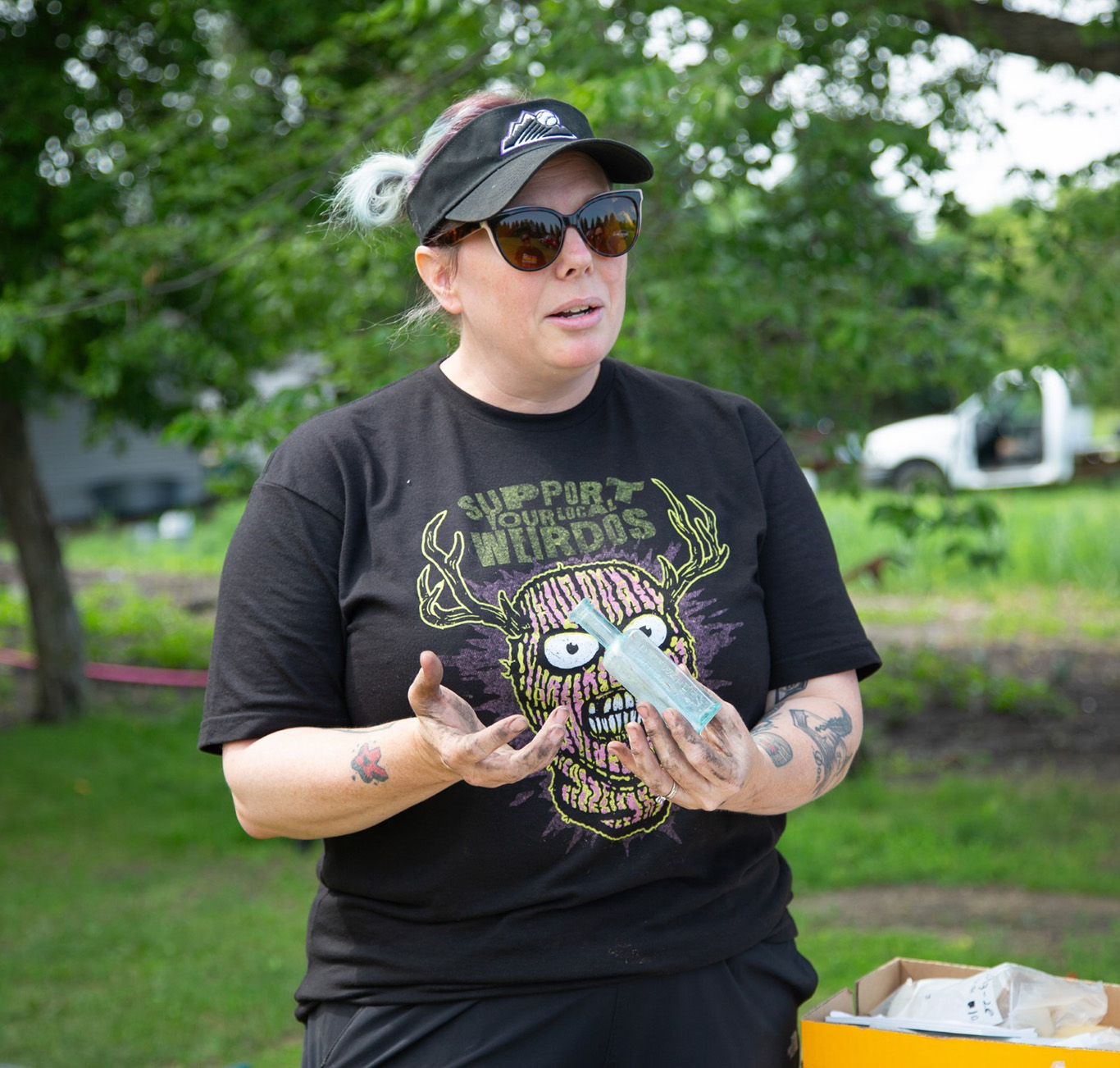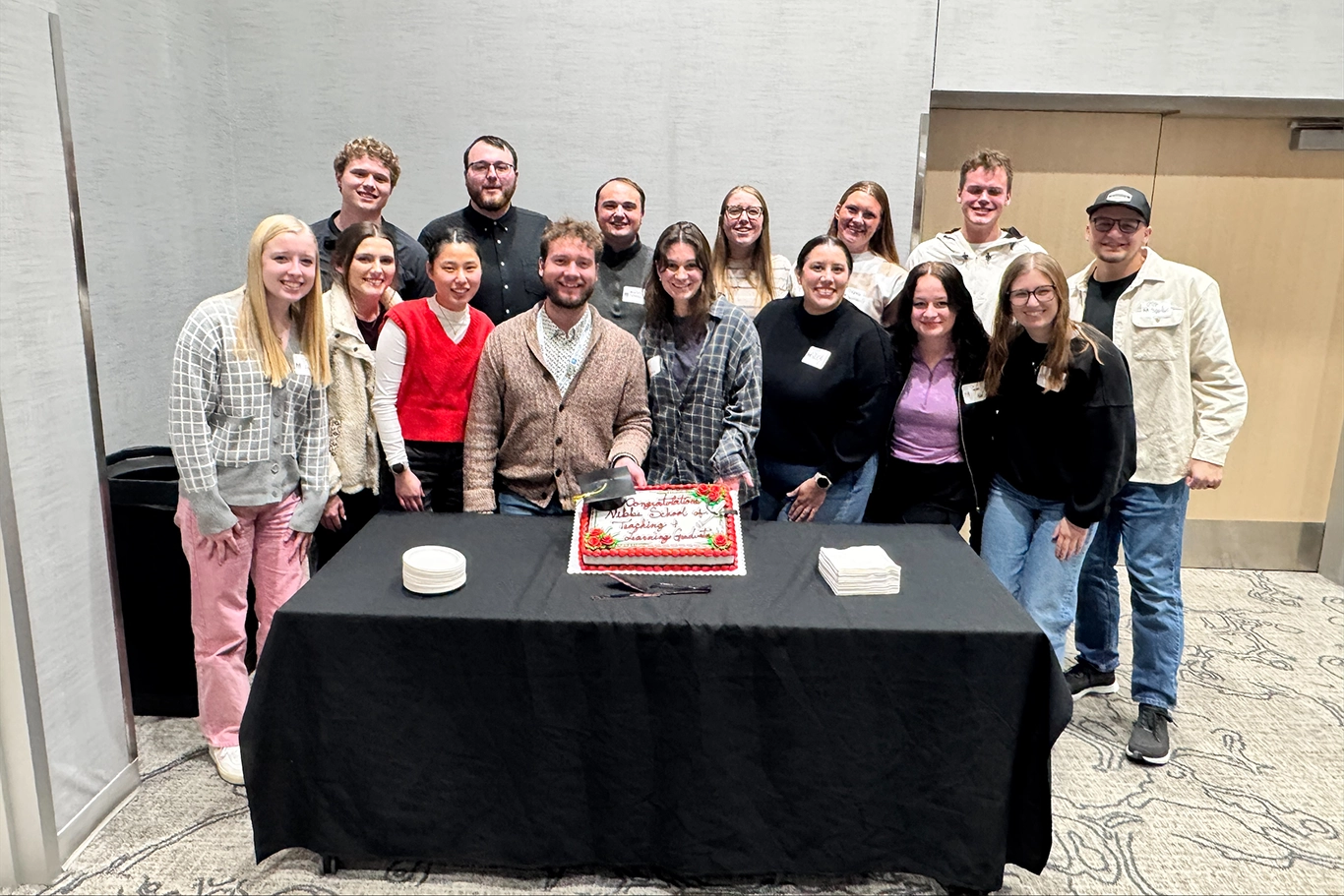Archaeology in action: Students explore Winnipeg Junction
In a quiet corner of rural Minnesota, Minnesota State Moorhead archaeology students excavate old saloon sites and trash pits to uncover forgotten artifacts that date back more than a century.
Dr. Amanda Butler, alumna and assistant professor at Moorhead, is combining academic training, public engagement and hands-on experience in the summer course "Fieldwork in Archaeology."
During the course, students dig into Winnipeg Junction, a boomtown near Hawley, Minnesota, with roots in the early 1900s. The land has become a living classroom thanks to the generosity of Moorhead alum and property owner David "Buddy" Norman.
"David (Buddy) invited us to dig. He loves history and does a lot of archival research on his own," Amanda says.
This summer, students collected old glass bottles that offer clues about drinking habits in the area, and pieces of metal and broken tools that help reveal kinds of labor in a small Midwest boomtown. Some items even point toward larger cultural patterns, like the role of women and children in saloon culture.

Amanda Butler holding a glass bottle recovered from a trash pit
Students regularly interact with residents and visitors who stop by the site, helping them understand how archaeology connects people and places.
"The data we dig up is just one part of the story. Oral histories, memories and community voices are strands that help us have a complete picture of the past," Amanda says. "When community members help us identify artifacts or share stories, our students get to see how much meaningful their work is."
Anthropology, the umbrella that archaeology falls under, is the study of what it means to be human — how we live, communicate, build communities, and leave traces behind. At Moorhead, students have two options to explore anthropology: archaeology and cultural anthropology.
Backed by Moorhead's commitment to experiential learning, the anthropology program offers multiple opportunities for fieldwork, lab analysis, research, and professional development.
Last year, students went to Cahokia, a UNESCO World Heritage Site in Illinois, where they used geophysical equipment to help document the community of Cahokia.
Outside the classroom, Moorhead students are invited to participate in the Dragon Anthropology Association and Geo Club, which organize public events and community outreach activities.
Moorhead's anthropology program is built on a four-field approach — archaeology, cultural anthropology, physical anthropology, and linguistics — giving students a broad understanding of what it means to be human. And for those pursuing archaeology, the job prospects are strong.
"As long as there are federal laws protecting cultural resources, there will be a need for archaeologists," Amanda says. "It's a direct line from this major to real-world work."
That career readiness is reflected in the program's success. This past spring, Moorhead conferred degrees upon its largest class of anthropology majors.
The anthropology program's future is focused on growth and relevance.
"Moorhead will give you an amazing education and will flame your curiosity," Amanda says.
Read more about the archaeology students' work in Winnipeg Junction.
Anthropology Degree
Moorhead's anthropology major teaches you to approach human understanding from both a biological and cultural perspective. It also gives hands-on experience, a competitive advantage when seeking a job.
Learn more about Anthropology


